Push-ups are among the most effective bodyweight exercises for building upper-body strength. They require no equipment, can be done anywhere, and offer various modifications to target different muscle groups.
There are many variations of push-ups that can be used.
How you position your hands when doing push-ups can change muscular recruitment patterns. This minor tweak can transform a regular push-up into a powerful way to strengthen specific muscles.
The most common hand positions include:
- Wide Grip Push-Up (150% shoulder width)
- Regular Push-Up (shoulder width)
- Close Grip Push-Up (50% shoulder width)
The wide grip push-up primarily activates the pectoralis major. In contrast, the close grip push-up emphasizes the triceps brachii.
Let’s discuss them in detail.
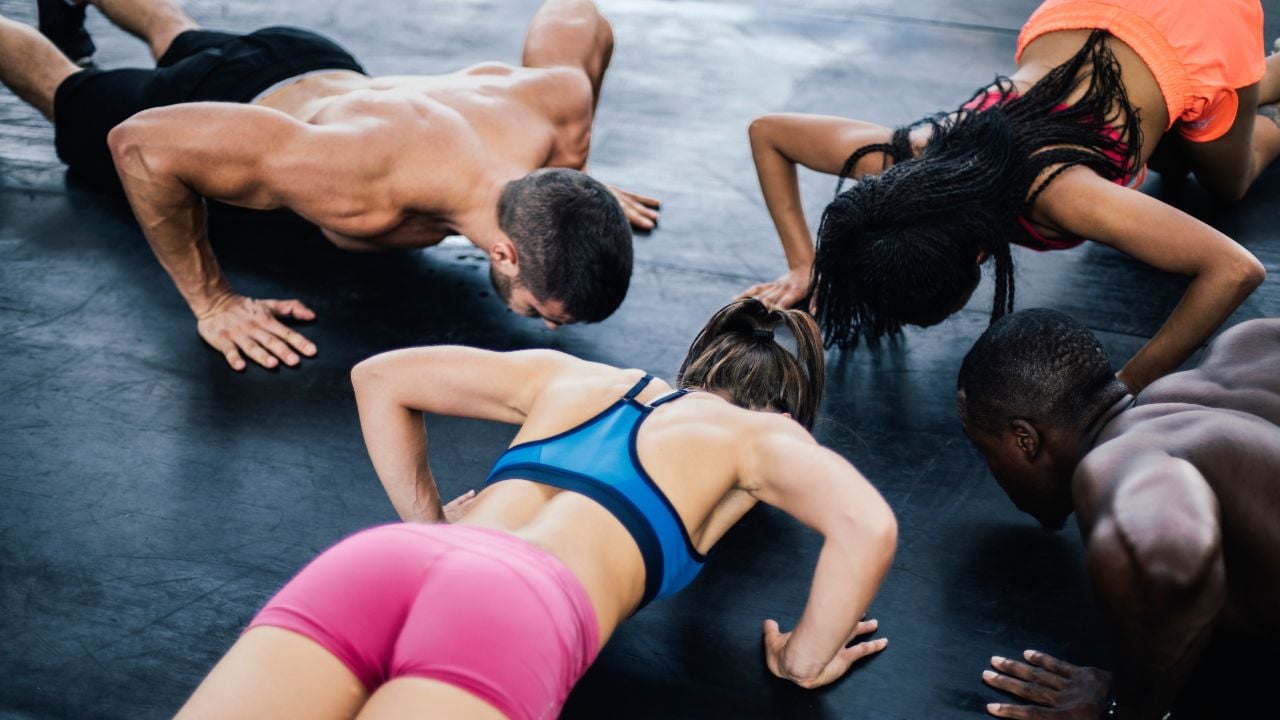
- Close Push Up Vs Wide Push-Up
- Close and Wide Grip Push Up Muscles Worked
- Wide Grip Push-Up
- Close Grip Push-Up
- How To Do Close Grip Push Up
- Close Hand Push Up Variation And Modification
- How To Do Wide Grip Push-Up
- Wide Push Up Variation And Modification
- FAQs
- Which Type Of Push-Up Should You Do?
- Does Close Grip Push-Ups Work Tricep Chest
- What Do Wide Push-Ups Work
- Reference
Close Push Up Vs Wide Push-Up
It is a question on all of our minds. What is the difference between a regular push-up, a close grip and a wide push-up?
In a regular push-up, you have your hands reasonably far apart and rest just outside your shoulders. The pectoralis muscles are more activated during standard push-ups than the triceps brachii.
During close-grip push-ups, your hands should be closer to each other and directly under your chest. It increases triceps and inner chest muscle activation more than a regular push-up. This means that individuals consider the narrow push-up a tricep-predominant exercise.
The increase in triceps activity in this workout is due to the narrower position of the hands, which places a heavier load on the triceps. This is evidenced by a study that found greater electromyographic (EMG) activity in the triceps brachii when doing close push-ups than when executing regular push-ups.
Wide-hand push-ups target your outer chest and shoulder muscles more than standard push-ups because you must place your hands further apart.

Close and Wide Grip Push Up Muscles Worked
The muscle activation of push-ups is typically examined through variations in hand placement, such as regular push-ups and close and wide-grip push-ups.
Wide Grip Push-Up
- The primary muscle worked during wide push-ups is the chest (Mainly Outer Chest)
- The secondary muscles include the muscles, deltoids (shoulders), Arms, and serratus anterior.
- Aside from the upper extremity muscles, Wide grip push-ups also engage the core, glutes, hamstrings, quadriceps, and calf muscles.
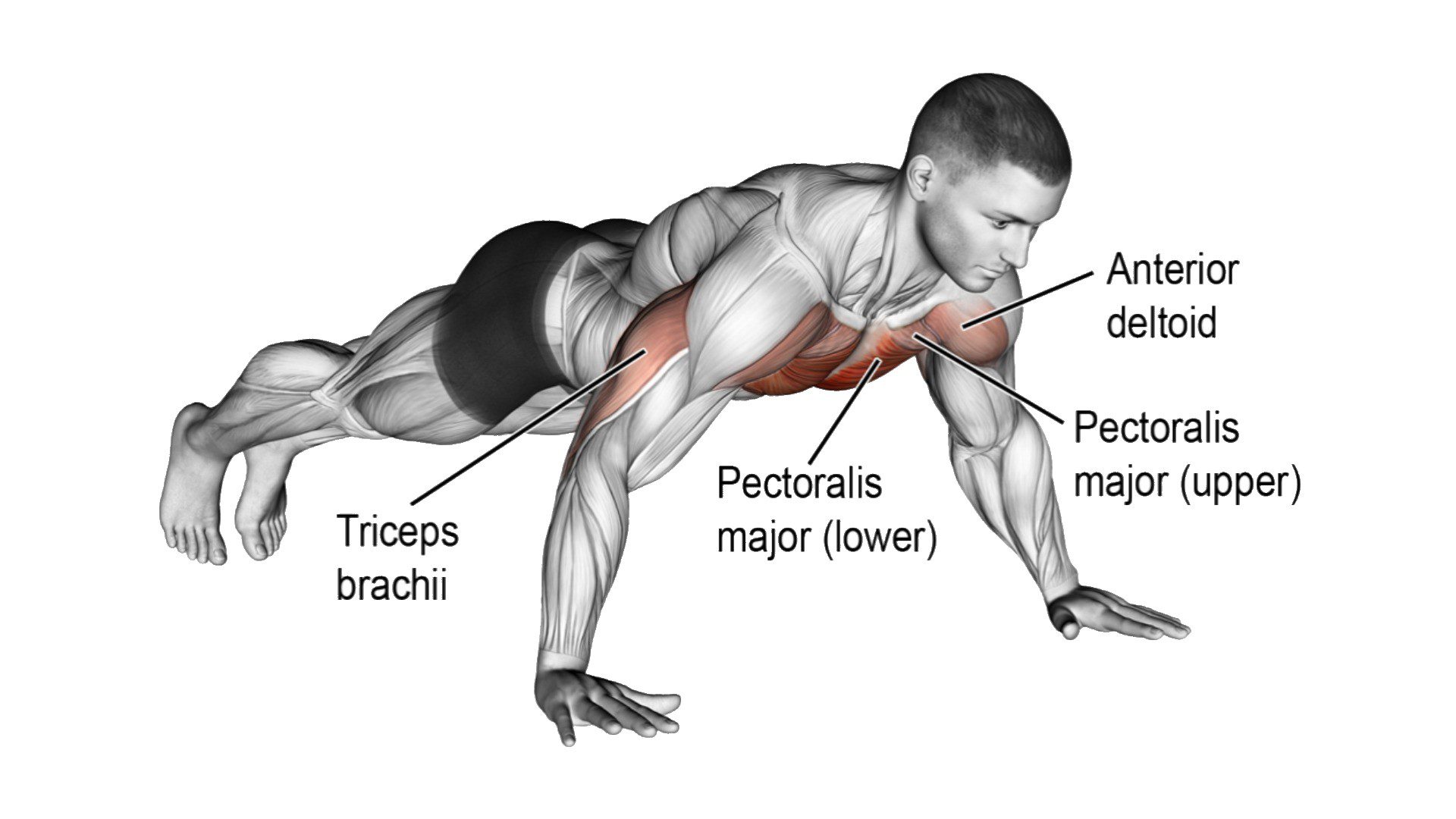
Close Grip Push-Up
- Primary Muscles: Triceps brachii., pectoralis major (especially the inner chest)
- Secondary Muscles: Anterior deltoids (shoulders) and serratus anterior.
- Stabilizing Muscles: Core (rectus abdominis, obliques), glutes, and lower back (erector spinae)

Want to take your gains to the next level? Discover your daily calorie needs with our free TDEE calculator.
How To Do Close Grip Push Up
Narrow Grip Push-Ups are the best exercise for building the inner pec and triceps. Take a narrower push-up stance than usual, similar to a close-grip push-up that helps build the inner chest and tricep.
- Lay face down on the ground with your legs straight, palm near, and arms supporting the upper body.
- Keep your knees off the ground. Take a narrower push-up stance than you usually would.
- Now, raise yourself off the ground, straightening your elbows and arms, but keep your elbows close to your body.
- Raise until your elbows are locked, and pause momentarily at the movement’s top.
- Now lower your body under slow, sustained motion, feeling the motion down until your chest is very close to the ground.
Close Hand Push Up Variation And Modification
If you want to make close pushups easier, you could try placing your hands on a wall or a more inclined surface or doing close-grip knee pushups.
If you would like to increase the intensity of close pushups, you could try doing close grip decline pushups or doing them on a less stable surface, such as a stability ball.
1. Close Grip Knee Push-Up
The Close Grip Knee Push-Up, a modified close push-up, is an excellent beginner-friendly exercise designed to target and strengthen the triceps brachii (the muscles at the back of your upper arms).
This variation is perfect for those new to push-ups or building upper-body strength.
Once the Close Grip Knee Push-Up becomes too easy, you can progress to the standard Close Grip Push-Up
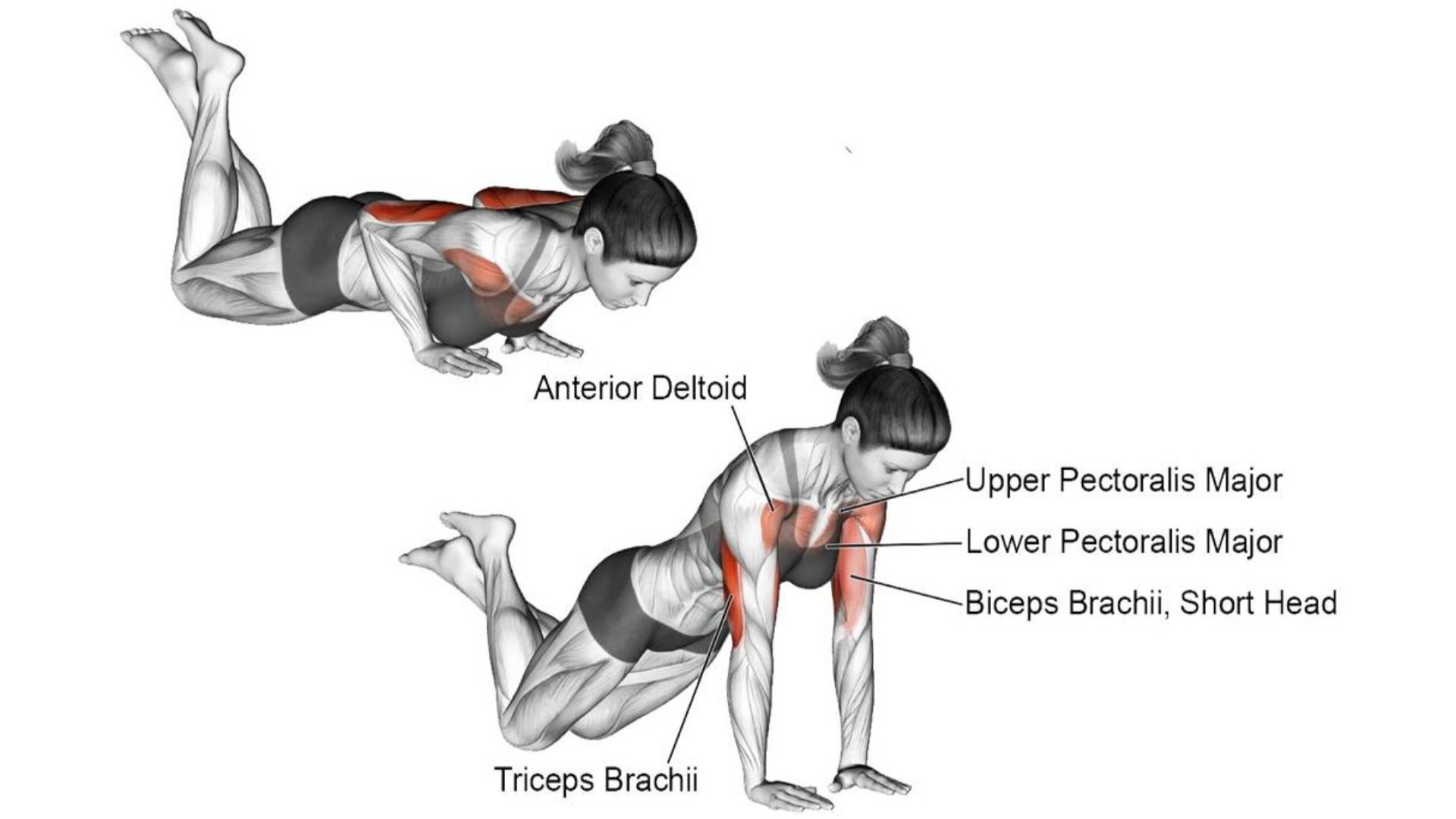
2. Close Grip Decline Push-Ups
Close Grip Decline Push-Ups are a challenging variation of the standard push-up.
Elevating your legs increases the resistance your body has to overcome. The added difficulty shifts more of your body weight onto your upper body, forcing your triceps, shoulders, and chest to work harder.
Additionally, the close hand placement (narrower than shoulder-width) further emphasizes the triceps
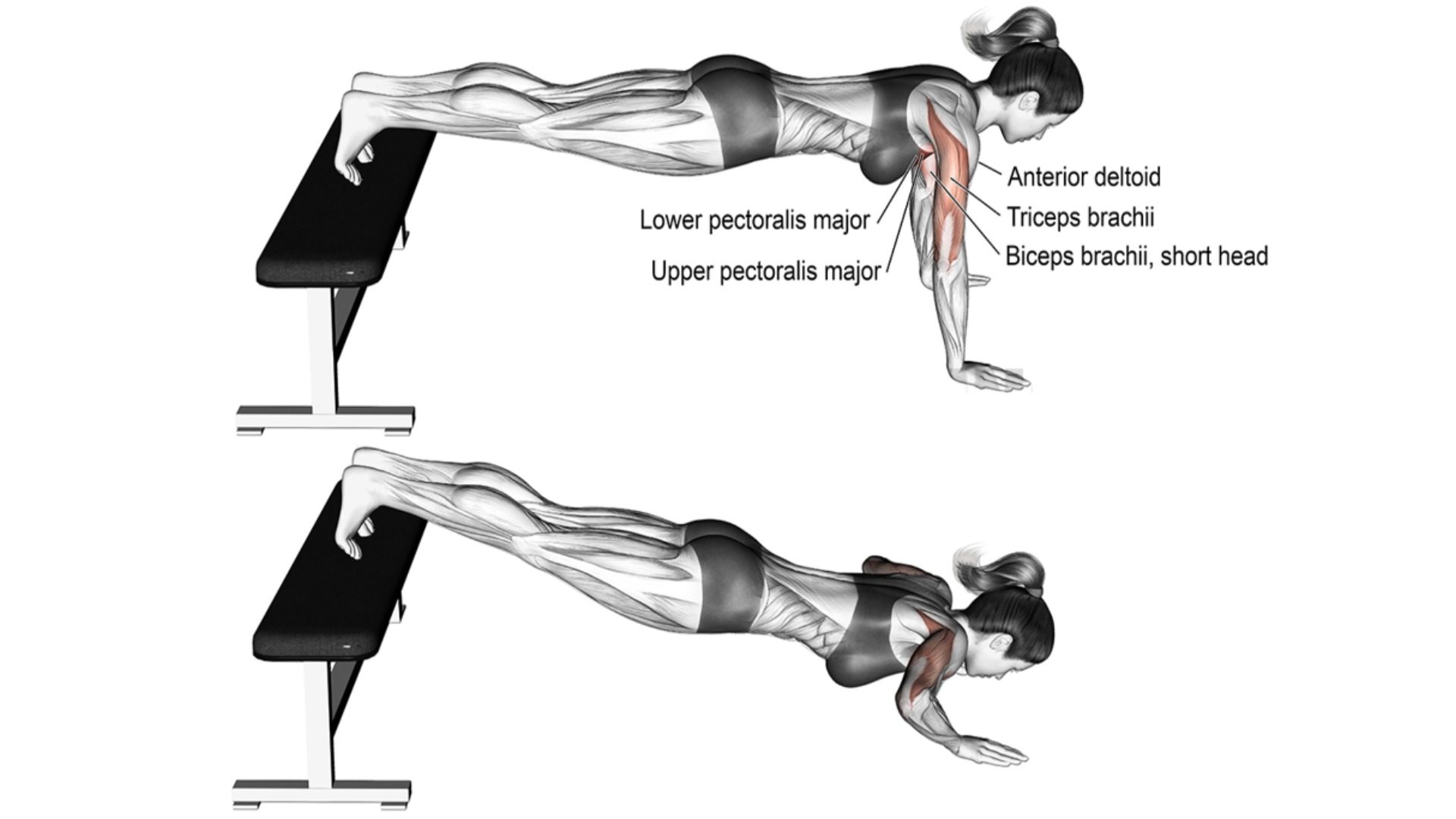
How To Do Wide Grip Push-Up
Wide push-ups will stretch the chest and mainly target the outer chest. This is because the range of motion isn’t that great, and you can’t bring your arms together.
- Lay face down on the ground with your legs straight and arms supporting your upper body.
- Put your arms in the 90/90 push-up position.
- Slowly descend to the floor by retracting the shoulder blades and unlocking the elbows.
- Descend until the upper arms are parallel or your chest touches the floor.
- When doing push-ups, focus on the outer chest area.
- Push back to the starting point by extending the elbows and driving your palms into the floor.
Wide Push Up Variation And Modification
If you want to make wide pushups easier, place your hands on a wall or more inclined surface or do a wide-grip knee push-up.
To increase the intensity of pushups, you may want to try doing wide-grip decline pushups or do them on a less stable surface, such as a stability ball.
1. Incline Wide Grip Push Up
The incline-wide push-up is a simple type that dramatically reduces the pressure on the arms, upper back, and abs.
The closer you stand to the wall, the easier it is to perform, but remember, it’s still important to be aware of your body alignment as you perform this push-up. It is an excellent exercise for beginners to target the lower and outer chest.
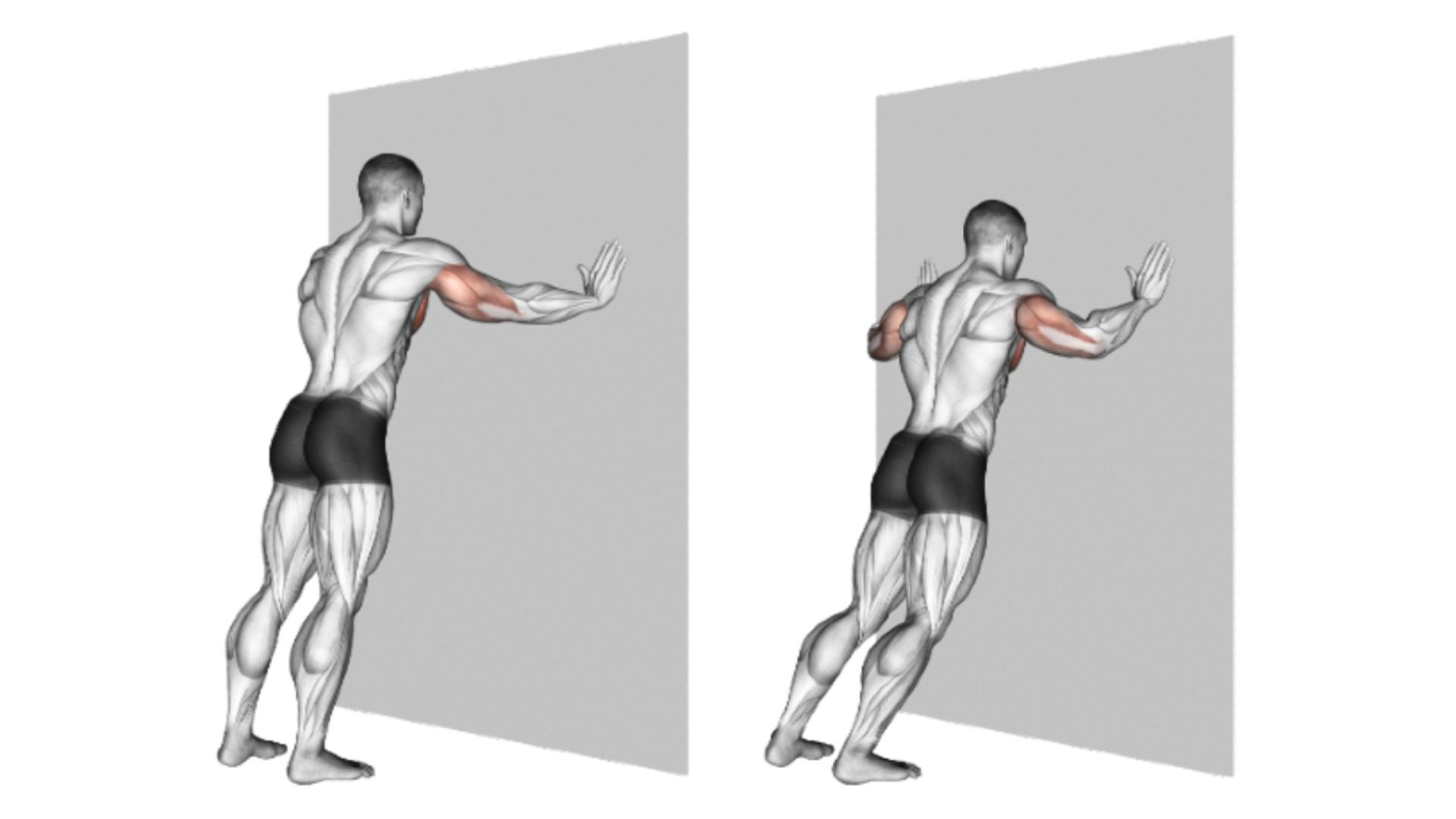
2. Wide Grip Decline Push Up
The wide grip decline push-up is an advanced variation of the wide push-up but with your feet on a bench. Although this exercise is called the wide decline push-up, it focuses more on the upper pectoral muscles and the outer portion of the chest.
Furthermore, your lower body is raised from the floor, and the resistance your body provides is increased compared to doing the push-up on the floor. This makes the wide-hand decline push-up harder than the standard push-up.
FAQs
Which Type Of Push-Up Should You Do?
For a more well-rounded physique, you might consider using various push-ups.
- Standard push-ups are best for the chest, shoulder and tricep.
- Incline Push Up works more on the lower chest and back.
- The decline push-up works more on the upper chest and front shoulders.
- Pike Push-ups focus more on the shoulder than the chest and tricep.
Does Close Grip Push-Ups Work Tricep Chest
The Close push-up is best for the tricep and inner chest.
What Do Wide Push-Ups Work
The wide push-up primarily works your outer chest and shoulder muscles.
Reference
- Youdas, J. W., Budach, B. D., Ellerbusch, J. V., Stucky, C. M., Wait, K. R., & Hollman, J. H. (2010). Comparison of Muscle-Activation Patterns During the Conventional Push-Up and Perfect· Pushup™ Exercises. The Journal of Strength and Conditioning Research, 24(12), 3352-3362. doi:10.1519/JSC.0b013e3181cc23b0
- Ebben, W. P., Wurm, B., VanderZanden, T. L., Spadavecchia, M. L., Durocher, J. J., Bickham, C. T., & Petushek, E. J. (2011). Kinetic Analysis of Several Variations of Push-Ups. The Journal of Strength & Conditioning Research, 25(10), 2891-2894
- Electromyographic comparison of modified push-up exercise

Manish is a NASM-certified fitness and nutrition coach with over 10 years of experience in weight lifting and fat loss fitness coaching. He specializes in gym-based training and has a lot of knowledge about exercise, lifting technique, biomechanics, and more.
Through “Fit Life Regime,” he generously shares the insights he’s gained over a decade in the field. His goal is to equip others with the knowledge to start their own fitness journey.
